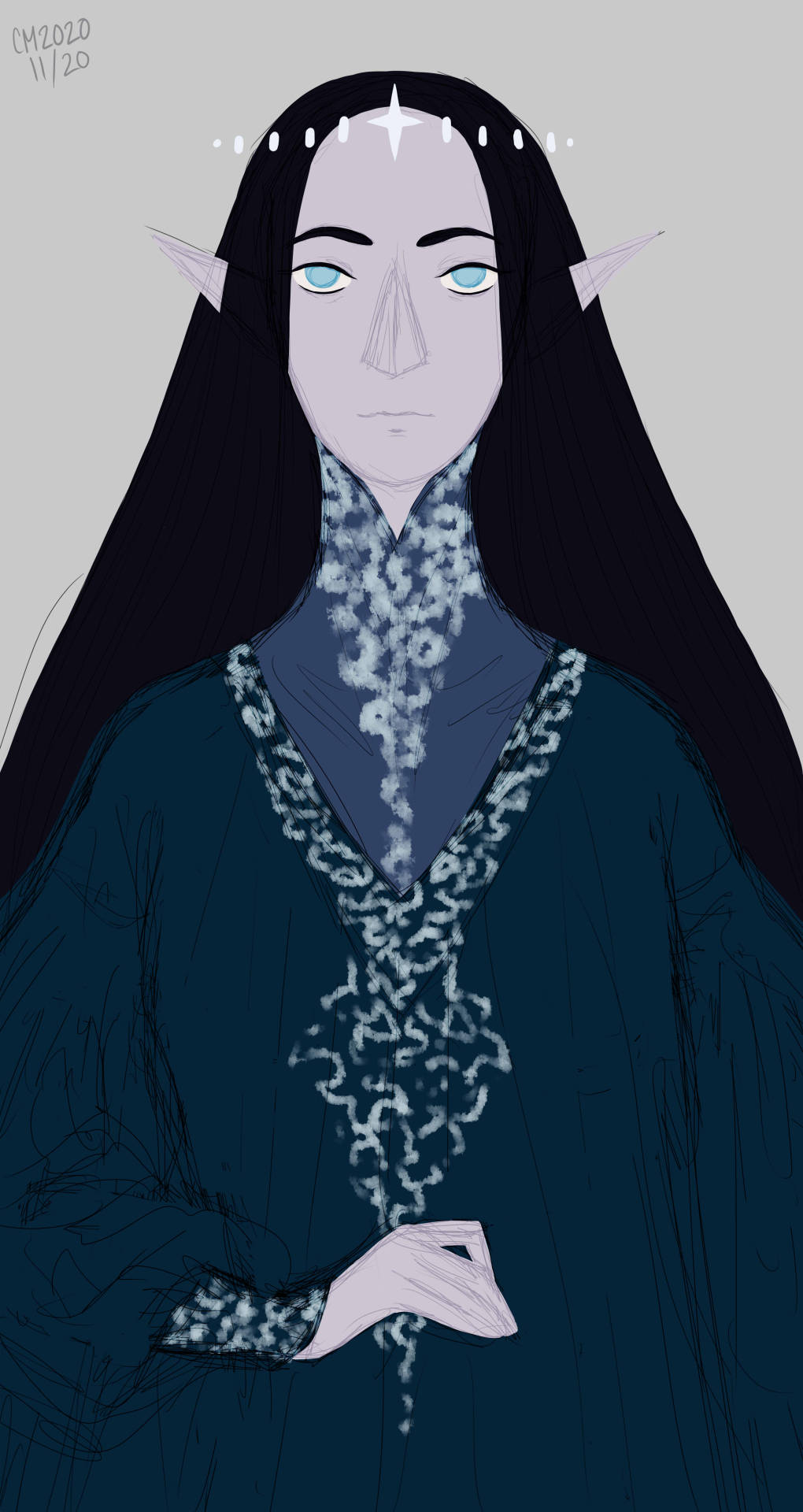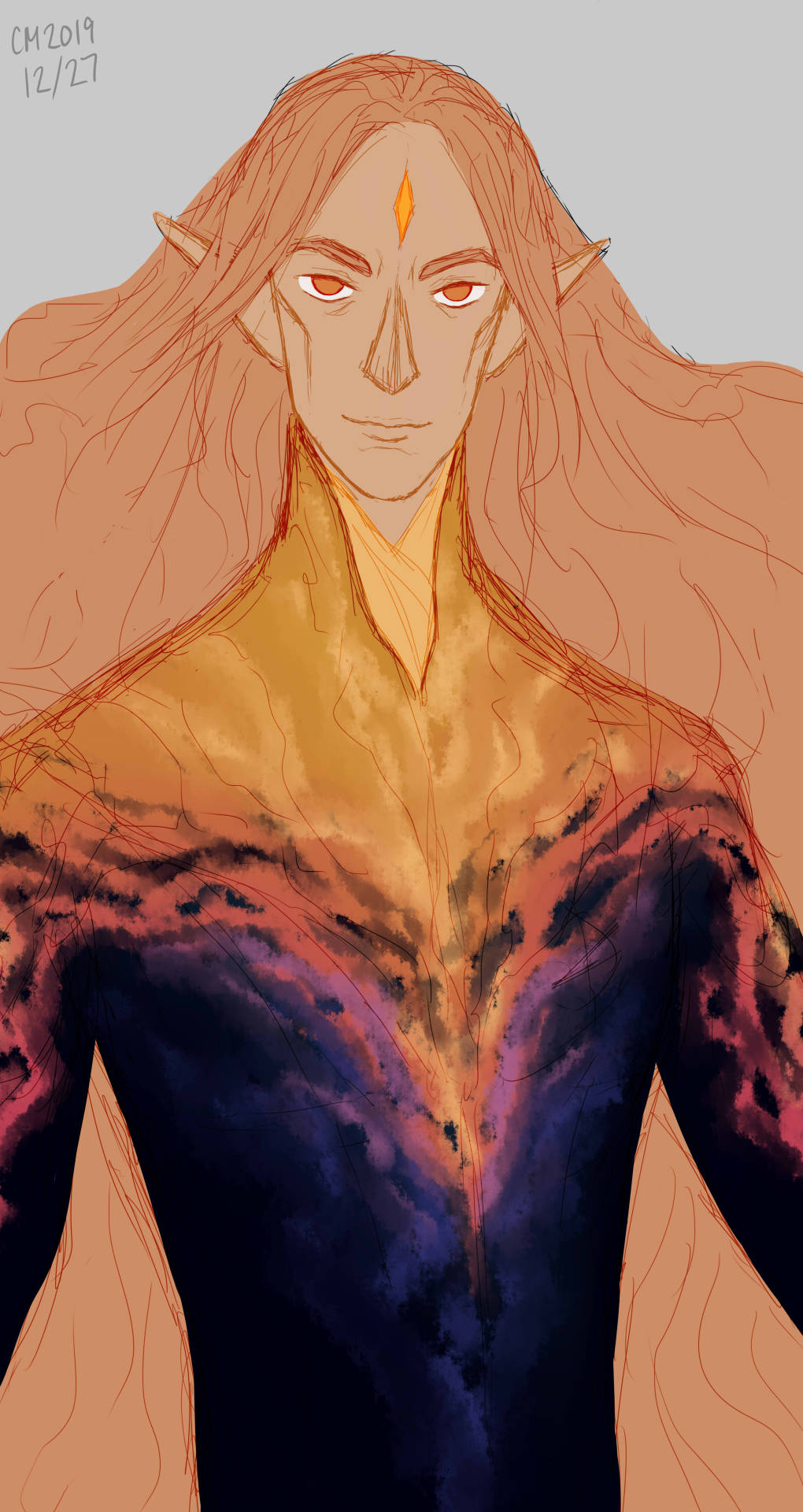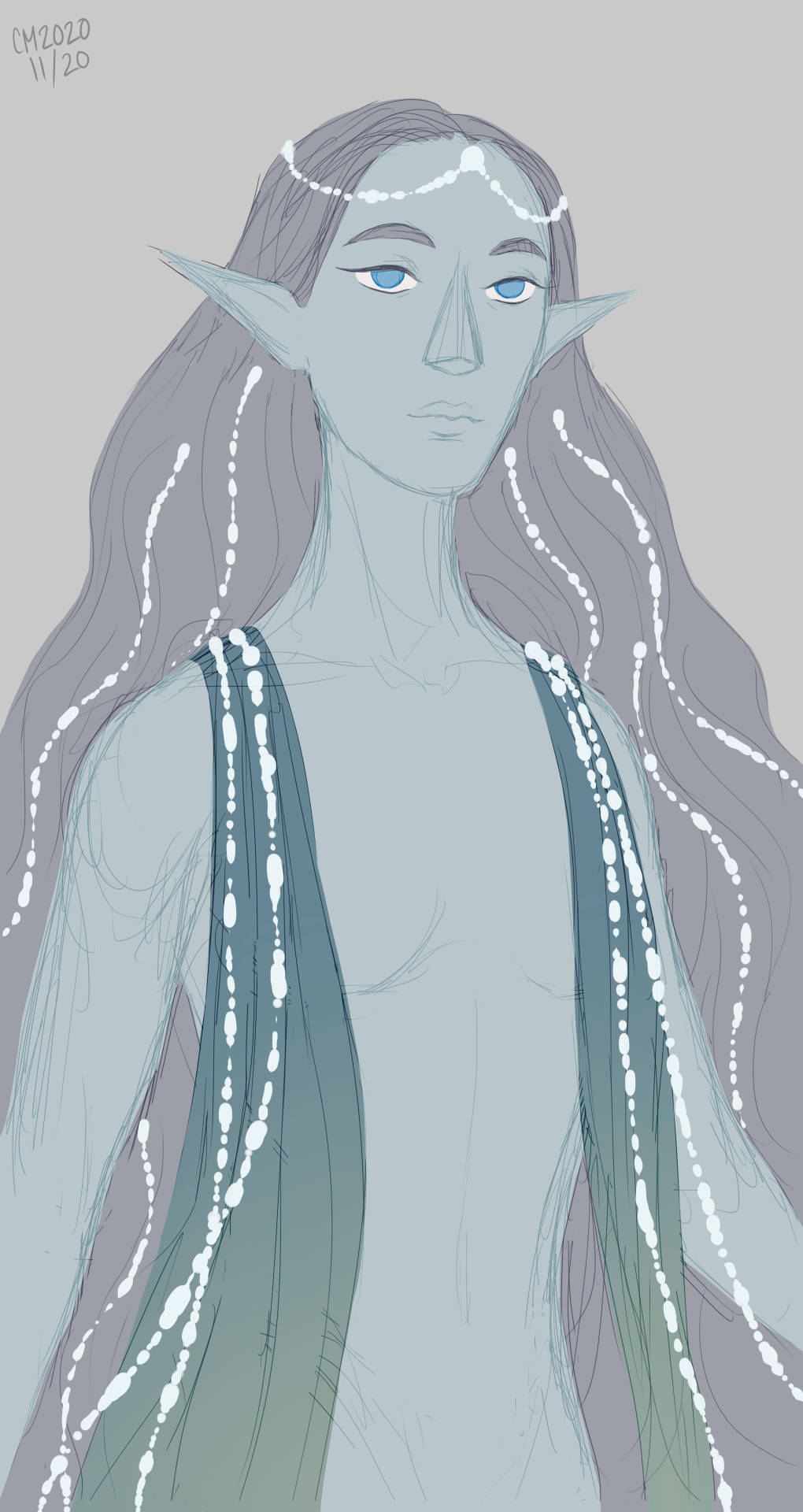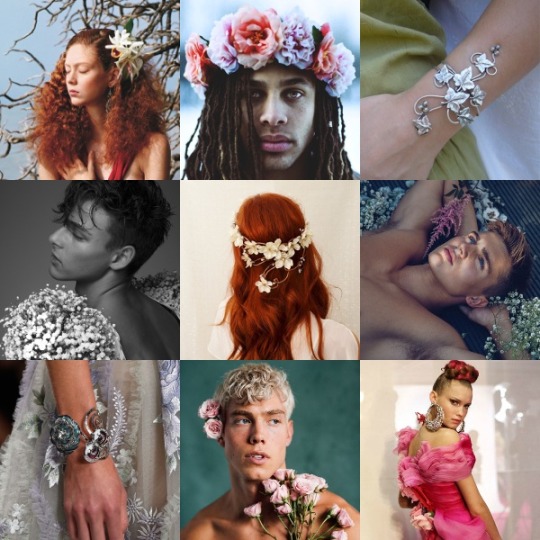#melian also served vana and este
Note
So does Tolkien ever actually explain why Sauron is so strange? Lots of Maiar decided to follow Melkor, but Mairon is the only one to go and do things on his own after Morgoth’s fall and become a Dark Lord himself. Is it because any other more independently minded ones were kinda killed/ taken prisoner during the War of Wrath (WW)? The only thing I could find about Sauron and the WW is that at some point he turned and fled the fighting (the Lost Road p.333). So he technically betrayed 2 Valar, not just Aule. Whereas the Balrogs that survived/escaped still wait in hiding for their master. Why is Sauron so unmaiar-like?
Hey anon, I am so sorry for the delay in this! There were life events and then catching up on work after life events and angst events and this is super rambly and I’m not sure answers your questions well.
Also, I had no idea about S and the War of Wrath in BoLT! Thank you!!! (My BoLT knowledge is worse than terrible.)
Tolkien writes a surprising among on Sauron and spends some time discussing Sauron's motives in the Notes on Motives in the Silmarillion essay (which I love dearly, it's great). But before I get into S in particular, I do want to note that I think that most of the named Maiar we see on page are unusual, in that they enter Elven history and interact with incarnates; most Maiar don't (Annals of Aman even mentions that the number of Maiar is unknown and that few have names). Even Gandalf, in his Olorin days, would sometimes hang out among Elves without a fana, going among them invisibly (creeper). The Maiar we see tend either to be the most powerful ones and/or the ones who actively live among and interact with incarnates. Sauron is both.
(I think the power thing does make a difference in Sauron's career goals, in that he's able to pursue them. He doesn't just desire to make himself a Dark Lord but has the ability to. Pre-Morgoth, he was "chief of Aule's people" and then the chief of Morgoth's, his steward when Morgoth was imprisoned, S ruling on his own if not in his own right. Sauron is also able to concentrate his power into the Ring. (On Motives begins with Sauron was 'greater', effectively, in the Second Age than Morgoth at the end of the First.) So S had the ability as well as the will.)
As for the Maiar more generally, I don't think they have an ontological need or desire or drive to serve. A few are associated with many Valar (Melian's at various points with Vana, Este, and Yavanna; Gandalf interns with everyone; Osse, Ulmo's supposed vassal, is said by Ulmo in UT to "obey the will of Mandos, being a servant of the Doom", which imo is just fascinating and also gives us an Osse who has connections to four Valar - including Aule in this, since it was he who sent Uinen to bring Osse back from Morgoth). We also see a lot of the named ones go off and do their own thing, either actively going against the wishes of the Valar or forgetting about them (Saruman and Radagast, respectively) or just chilling on their own (Melian, who's into her husband "the tall" 😏). The Maiar are "of the same order as the Great [=Valar] but of less might and majesty," being "spirits of the same kind [...] but having less might and authority." It's a difference in degree - and the difference in power is a very great difference - but Valar and Maiar aren't fundamentally different on a metaphysical level; they’re the same species, if we can use species to describe their kind. The order of authority (Valar > Maiar > Elves > etc) is decreed, cultural, an order but one that individuals are able to go against. I don't think Sauron's going against his nature in wanting to be a Dark Lord in his own right, he himself the King of the Earth, he himself the object of cults. (Tolkien addresses the Cult of Melkor that Sauron sets up in Numenor in On Motives too, basically coming to the conclusion that it was the most expedient method for S. I'm sure our boy appreciated the drama of it too; he likes his terrible fun.)
I do think that Maiar differ in level of... individuality? personhood? personality? In that some are closer than others in their way of thinking and viewing the world to incarnates than others are, and that Sauron is at the far end of that scale. He's a character with a personality, if that makes sense? We also know that there are incarnates whose psychology he understands very well and thus can tempt them, often successfully. Gandalf says he doesn’t understand minds who don’t work like his, but Sauron clearly understands plenty of incarnate minds, and his own must work in a similar way. Sauron also has his individual quirks, such as his sense of humor, which he maintains even at the end (finding Ungoliant amusing). He’s a creator too, and a master one, even sharing Tolkien's own hobby of conlanging.
As for why S wants to rule the world: it's an outcrop of his original desire to make the world a better place by putting it in order and reforming it. Tolkien puts it better than I do in On Motives, when he's describing Sauron at the end of the Third Age:
Sauron had never reached this stage of nihilistic madness [that Morgoth did]. He did not object to the existence of the world, so long as he could do what he liked with it. He still had the relics of positive purposes, that descended from the good of the nature in which he began: it had been his virtue (and therefore also the cause of his fall, and of his relapse) that he loved order and co-ordination, and disliked all confusion and wasteful friction. (It was the apparent will and power of Melkor to effect his designs quickly and masterfully that had first attracted Sauron to him.) Sauron had, in fact, been very like Saruman, and so still understood him quickly and could guess what he would be likely to think and do, even without the aid of palantiri or of spies; whereas Gandalf eluded and puzzled him. But like all minds of this cast, Sauron's love (originally) or (later) mere understanding of other individual intelligences was correspondingly weaker; and though the only real good in, or rational motive for, all this ordering and planning and organization was the good of all inhabitants of Arda (even admitting Sauron's right to be their supreme lord), his 'plans', the idea coming from his own isolated mind, became the sole object of his will, and an end, the End, in itself.*
*[footnote to the text] But his capability of corrupting other minds, and even engaging their service, was a residue from the fact that his original desire for 'order' had really envisaged the good estate (especially physical well-being) of his 'subjects'.)
(Though I will note that Sauron absolutely lets his various foibles such as his nasty sense of humor or his aesthetic (only the black horses, pls) or cowardice or cackling villain drama occasionally override that need for order and efficiency.)
Thank you again for the ask, and I hope it explained some of my thoughts on Sauron’s peculiarities <33
#ask#anonymous#sauron#meta#on motives#is really the best#all of morgoth's ring is good but those four pages are worth the price of admission#gah i'd forgotten the bit about how osse wants to murder tuor#(on tuor and his coming to gondolin ut pg 30)#and how he's a servant of the doom so interesting!#must think on it!
47 notes
·
View notes
Photo








A collection of my Maiar designs, based on how they’d look in my stories, featuring: Eönwë, Ilmarë, Sauron, Melian, Olórin, Curumo, Ossë, and Uinen.
While I was thinking about their designs, I came up with a couple headcanons (mostly taken from my stories loll). I imagine that they’d take after their Valar. For example, Eönwë is a bird in Manwë’s sky, and Ilmarë is a star in Varda’s constellations (or night sky). Or they might blend in with their Vala’s “landscape” -- Ossë and Uinen take after Ulmo’s sea. But Uinen could also appear as a radiant pearl. So yeah, these designs might not be their permanent look XDD
As for Olórin and Curumo, they have more earthy tones; I read that Olórin served Manwë, Varda, Irmo, and Nienna, and that’s a lot to put into his design loll So I gave him something simple, more Elf-like (and that’d work nicely if one headcanons him to walk amongst the Elves and all). The same goes for Curumo, though I imagine Curumo would take a more otherworldly appearance while in Aulë’s forge. Perhaps a jewel-like look?
Melian is the most Elf-like because she’s living among the Sindar in Doriath. Sauron is fiery, I suppose hearkening back to his days in Aulë’s forge XDD I thought about including my design for Annatar, but I might leave that for later loll
#melian also served vana and este#the flower crown hearkens back to that i'd say#honestly i wish i could do a full-body image for olorin#i feel like his cloak is too boring in this shot#but my reference for it is actually quite lovely in full#as for curumo ...#ehhh#i wasn't quite sure what to do with him#i just needed to pair olorin up with somebody lmaoo#also ilmare high-key looks like one of my ocs#because of the pale skin and dark hair and blue clothes#art#my art#tolkien#fanart#silmarillion#maiar#eonwe#ilmare#sauron#melian#olorin#curumo#osse#uinen#gandalf#saruman#btw the drawings for eonwe sauron and melian are from last year#the others are recent XDD
425 notes
·
View notes
Text

Hi guys, i can't deal with the idea that melian wears red. She is like a twillight maiar of the nightingales what reminds me of the color blue and black. Also she serves este and vana in the garden of lorien. That reminds me more of a green color. Why does she wears a red dress? I dont know. She looks more like a vampire.So i gave her a blue twilight cape for her to be more friendly.
16 notes
·
View notes
Photo




The People of Vana, the Ever-Young
Vana was the younger sister of Yavanna who represents the beauty that can be found in the flora and fauna of nature. Vana doesn’t get much attention in the Silmarillion and is mostly mentioned in association with flowers.
But out of the few Maiar that are given names by Tolkien, two of the strongest/most significant are associated with Vana.
Arien, who became the guardian of the Sun after the death of the Two Trees, had previously watered Vana’s flowers with the golden dews of Laurelin. She was a spirit of fire who Melkor had been unable to corrupt to his service, and when the sun first appeared in the sky he dared not attack her and instead opted to conceal himself and his fortress(es) with thick clouds of shadow. Tolkien also emphasized that Tilion, the male guardian of the moon, was less powerful than Arien, and when he tried to approach her the moon was scorched.
Melian, who served both Vana and Este while in Valinor, was associated with songbirds and forests and was said to be very similar to Yavanna. Like Orome, Yavanna, and Ulmo, Melian was unable to completely abandon the rest of Arda when the Valar first retweeted to Aman, and she came often to the forests there, where she eventually fell in love with the elf Elwe, later named Thingol. After many years she and Thingol gathered his followers and founded the kingdom of Eglador, the first true elven kingdom in Arda. Following the return of Morgoth from Aman and the Flight of the Noldor, Melian used her powers to magically protect their kingdom, preventing anyone less powerful than her from entering, including the monster Ungoliant. She proved to be a strong, wise, and caring ruler of the newly renamed kingdom of Doriath, and was willing to aid outsiders in their struggles against evil. She became the mother of Luthien, and thus became a major figure in the quest for the Silmarils. Melian was also a friend and mentor to Galadriel.
Interestingly, both of these Maiar also happen to have a strong association with humans. Arien’s first journey across the sky was the signal for the awakening of men, and Tolkien says that it was for this reason she was of the most revered of the Maiar by men. Melian, meanwhile, is known for providing aid to Turin as well as his sister and mother, as well as to Beleg, although she also foresaw his death. When Hurin entered her land, Melian was able to use her powers to free him from Morgoth’s spells.
She was also the only Ainu who coupled with one of the Children of Illuvatar, passing her Maian blood on to both elves and men. Elrond, who married Celebrian the daughter of Melian’s friend Galadriel, was descended from her. Through Elrond’s brother Elros, who chose to live as a mortal man, she was an ancestor of the Kings and Queens of Numenor and their descendants. This included the Lords of Andunie, an offshoot of the Numenorean royal family through princess Silmarien. One of these lords, Elendil, became ancestor of the ruling families of Gondor and Arnor. The first Princes of Belfalas are described as being close kin of Elendil and therefore descended from Elros and, by extension, Melian. The Princes of Dol Amroth are a branch of the Princes of Belfalas, and Morwen Steelsheen of Belfalas married Thengel, the sixteenth King of Rohan. Thus, while Aragorn and Arwen and usually depicted as her most prominent descendants from the Lord of the Rings trilogy, Eomer, Eowyn, Boromir, and Faramir are also all distantly descended from her through the Princes of Belfalas, as is Lothiriel of Dol Amroth, the cousin of Boromir and Faramir who marries Eomer to become Queen of Rohan.
The power and significance of these Maiar of Vana, combined with Vana’s role in the creation of the Two Trees in Tolkien’s earlier stories, depict a Vala who is stronger and more prominent than is apparent from reading the few passages where Vana appears in Tolkien’s later works.
#Maiar#Ainur#Vana#Arien#Melian#Tolkien#Silmarillion#Maiar Moodboard#Vana Moodboard#Vana Maiar#Tolkien Moodboard
44 notes
·
View notes